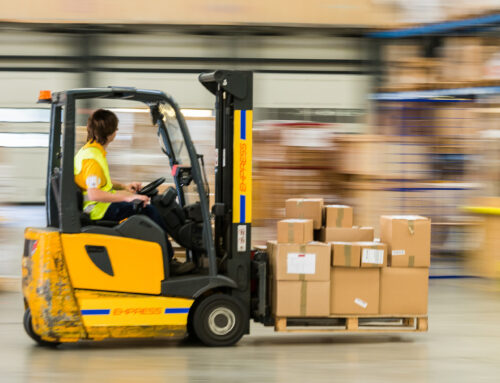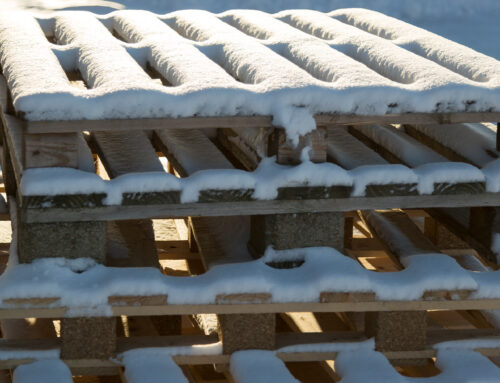Industrial packaging predictions can be tricky, but there are some forecasting indicators that make us pretty comfortable in making a few predictions about how we see the industry looking in 2020. We definitely see some challenges ahead for the industry as a whole, but we also see some signals that offer the potential for real opportunity in the coming year.
Let’s gaze into the Conner crystal ball.
Expect Seasonally Cyclical Lumber Pricing Trends
Southern yellow pine (SYP) is one of the primary materials that we use in our industrial packaging solutions, so it makes sense that lumber prices affect our business enormously. As you may recall, 2018 saw near record highs of SYP, but in 2019 the prices stabilized tremendously.
This year it looks like the prices for SYP will be seasonally cyclical, meaning the price fluctuates the way we normally expect throughout the year. Many experts are also predicting that we’ll see more spruce from Canada. Time will tell.
It’s also likely that softwood, like SYP, will increase in market share within the wood packaging industry, due to tariffs on hardwood.
Hardwood May Become More Difficult to Source
China used to be the largest market for American hardwoods, exporting nearly $2 billion worth of hardwood products to the country annually. The country used to account for nearly 50% of the hardwood produced in the U.S.
The Trade War and tariffs, beginning in mid-2018, changed all that.
According to the Hardwood Federation, Chinese hardwood exports are down 43% or $615 million. You might think that means a surplus of hardwood and lower prices, and you wouldn’t be wrong. As that surplus is used up, the slowed markets provide no incentive for woodlot owners to sell and replenish the supply. It creates economic uncertainty and that won’t benefit the hardwood industry or the manufacturers who depend on hardwood.
Once trade agreements are in place to ease hardwood exports, you can expect to see the market normalize.
Labor Continues to be Challenging
With ultra-low unemployment rates, quality labor is a precious commodity in the industrial packaging industry, and that’s not likely to change this year. Not only is turnover at all-time highs while the number of applicants is dwindling, but the lack of experience is also adding to the problem.
This creates upward pressure on hourly labor rates, benefits, incentives, and overall working conditions, and may push packaging prices upward over the next several years.
According to the U.S. Bureau of Labor Statistics, there are five sectors that are projected to experience declines from 2018-2028: retail trade, wholesale trade, utilities, federal government, and manufacturing. This problem isn’t going to ease up anytime soon.
Will Labor Shortages Require More Industry Automation?
The labor challenges faced by many in the industrial packaging industry are forcing many companies to look for creative ways to combat the problem. For some, the demand for automation has surged.
If a packaging company can manage the investment required, there are a lot of advantages to using automation for some tasks:
- Less physical labor and employees required.
- Increases in production.
- Reduced workers compensation claims.
As the demand for machinery that can automate more and more in packaging production, machinery manufacturers will feel the pressure to create better machinery at more competitive prices. Significantly more automation may not come in 2020, but it is coming.
Smarter Customers
We continue to see that our customers are educating themselves more and more about packaging products, market movements, logistics, etc. Most of all, we see a lot of really customers who want to know their options, not only for packaging, but also for 3PL type services.
Customers are also more open to new ideas that we bring them to lower their total packaging costs. They almost always have a good idea of what they need in their packaging, but they’re also open to discussing and working through additional factors that impact their supply chain.
Politics Will Be At Play
It’s pretty easy to predict that politics will play a role in the industrial packaging industry, as well as a lot of other industries. We already talked about the Trade War and how tariffs are affecting hardwoods, but the Trade War also directly affects a lot of the manufacturers that are our customers. Over and above all that, the resulting slowdown in economic growth affects everyone, and it doesn’t look as if that’s going settle out soon.
As you know, we’re also in an election year. That makes consumers cautious, which in turn impacts business. Elections can also affect the stock market, world markets, and the US dollar, and the level of impact largely depends on how contentious the race and how ugly the candidates get. If the last few elections are any indicator, it could get ugly again, and that causes less economic stability.
Corporate Social Responsibility Increases
Increases in social responsibility is something that we’ve seen with our customers for a few years now. In our industry, social responsibility largely extends to using recyclable packaging materials (wood instead of plastic), taking steps to reduce carbon footprint, and improving the overall environmental impact of the business.
We see this trend continuing through 2020 and beyond.
Supplier Location Becomes Paramount
One of the biggest trends that we’ve noticed in our own business is how much importance our customers place on supplier location. With the cost of logistics on the rise, having your supplier near where your warehouse or manufacturing plant is located is a wise move.
While there are a number of elements involved in selecting a supplier in your supply chain, such as quality and reliability, location is quickly becoming the deciding factor for many manufacturers. It’s one of the best ways to optimize your supply chain. We expect this trend to continue.
In Conclusion
Those are our industrial packaging predictions for 2020. It’s kind of a mixed bag, but overall there is a lot of room opportunity and growth in this industry. We’re optimistic.
While there may be some economic instability due to the Trade War and the upcoming presidential election, overall the pictures is pretty good. Labor is going to continue to be a challenge, but SYP is relatively stable, and we think 2020 is going to be a great year overall.
We can’t wait to serve you in 2020 and beyond.






